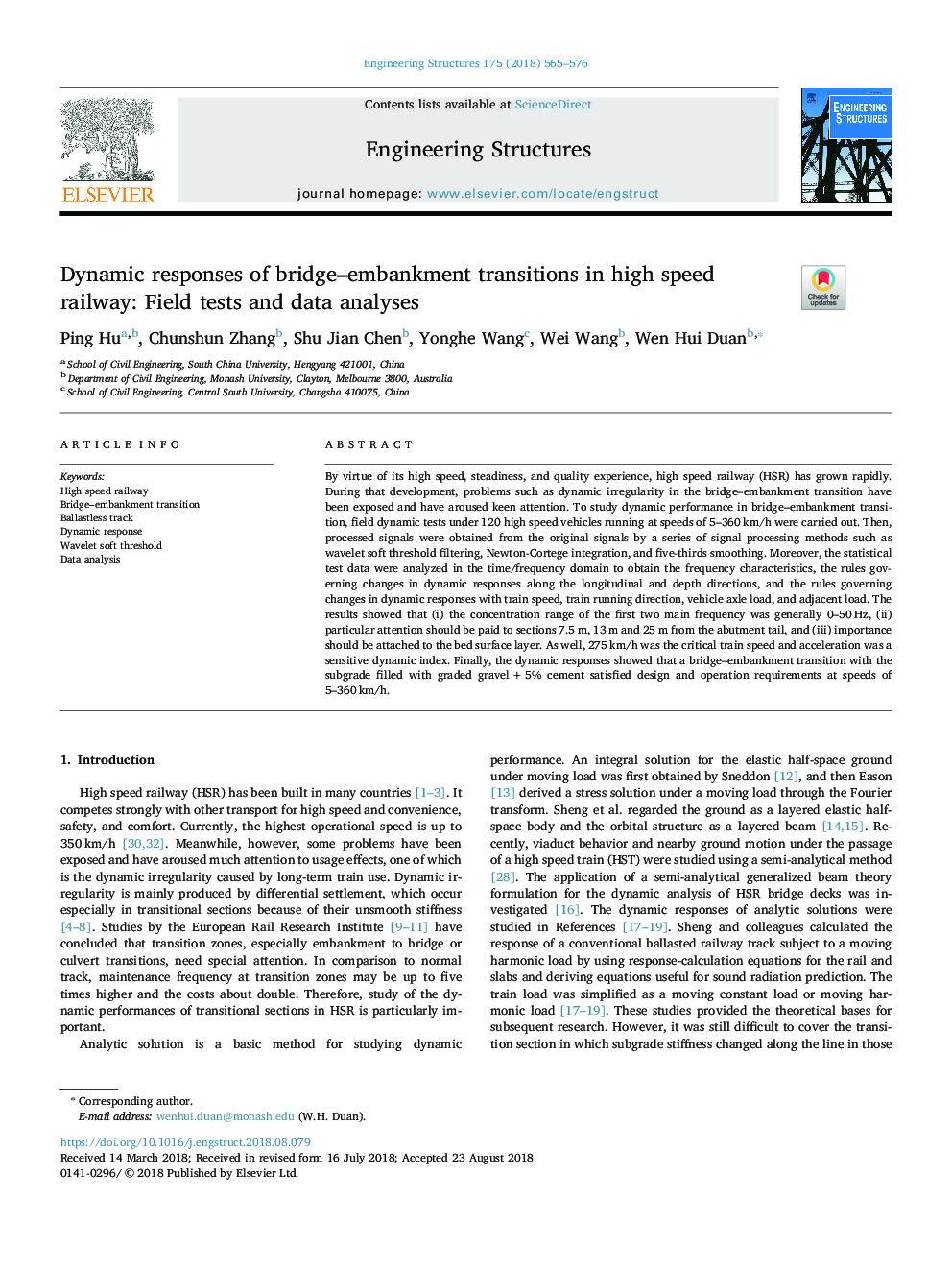| Article ID | Journal | Published Year | Pages | File Type |
|---|---|---|---|---|
| 10126903 | Engineering Structures | 2018 | 12 Pages |
Abstract
By virtue of its high speed, steadiness, and quality experience, high speed railway (HSR) has grown rapidly. During that development, problems such as dynamic irregularity in the bridge-embankment transition have been exposed and have aroused keen attention. To study dynamic performance in bridge-embankment transition, field dynamic tests under 120 high speed vehicles running at speeds of 5-360â¯km/h were carried out. Then, processed signals were obtained from the original signals by a series of signal processing methods such as wavelet soft threshold filtering, Newton-Cortege integration, and five-thirds smoothing. Moreover, the statistical test data were analyzed in the time/frequency domain to obtain the frequency characteristics, the rules governing changes in dynamic responses along the longitudinal and depth directions, and the rules governing changes in dynamic responses with train speed, train running direction, vehicle axle load, and adjacent load. The results showed that (i) the concentration range of the first two main frequency was generally 0-50â¯Hz, (ii) particular attention should be paid to sections 7.5â¯m, 13â¯m and 25â¯m from the abutment tail, and (iii) importance should be attached to the bed surface layer. As well, 275â¯km/h was the critical train speed and acceleration was a sensitive dynamic index. Finally, the dynamic responses showed that a bridge-embankment transition with the subgrade filled with graded gravelâ¯+â¯5% cement satisfied design and operation requirements at speeds of 5-360â¯km/h.
Related Topics
Physical Sciences and Engineering
Earth and Planetary Sciences
Geotechnical Engineering and Engineering Geology
Authors
Ping Hu, Chunshun Zhang, Shu Jian Chen, Yonghe Wang, Wei Wang, Wen Hui Duan,
